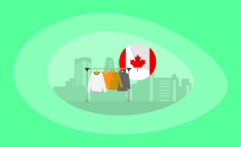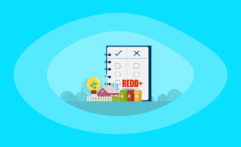19 Most Sustainable US Clothing Brands: The Conscious Consumer’s Guide
Affiliate Disclosure
Hey fellow impactful ninja ?
You may have noticed that Impactful Ninja is all about providing helpful information to make a positive impact on the world and society. And that we love to link back to where we found all the information for each of our posts.
Most of these links are informational-based for you to check out their primary sources with one click.
But some of these links are so-called "affiliate links" to products that we recommend.
Why do we add these product links?
First and foremost, because we believe that they add value to you. For example, when we wrote a post about the environmental impact of long showers, we came across an EPA recommendation to use WaterSense showerheads. So we linked to where you can find them. Or, for many of our posts, we also link to our favorite books on that topic so that you can get a much more holistic overview than one single blog post could provide.
And when there is an affiliate program for these products, we sign up for it. For example, as Amazon Associates, we earn from qualifying purchases.
What do these affiliate links mean for you?
First, and most importantly, we still only recommend products that we believe add value for you.
When you buy something through one of our affiliate links, we may earn a small commission - but at no additional costs to you.
And when you buy something through a link that is not an affiliate link, we won’t receive any commission but we’ll still be happy to have helped you.
What do these affiliate links mean for us?
When we find products that we believe add value to you and the seller has an affiliate program, we sign up for it.
When you buy something through one of our affiliate links, we may earn a small commission (at no extra costs to you).
And at this point in time, all money is reinvested in sharing the most helpful content with you. This includes all operating costs for running this site and the content creation itself.
What does this mean for me personally?
You may have noticed by the way Impactful Ninja is operated that money is not the driving factor behind it. It is a passion project of mine and I love to share helpful information with you to make a positive impact on the world and society. However, it's a project in that I invest a lot of time and also quite some money.
Eventually, my dream is to one day turn this passion project into my full-time job and provide even more helpful information. But that's still a long time to go.
Stay impactful,
Amid growing concerns about the textile industry’s environmental impact, there is pressure to find greener clothes for your wardrobe. And as modern supply chains for clothing tend to spread out all over the world, there is an argument to be made for lowering the impact of buying clothes by sticking with brands closer to home. So, we had to ask: Which are the most sustainable US clothing brands?
The most sustainable US clothing brands are Patagonia, Happy Earth Apparel, and Harvest & Mill, which source low-impact materials and reduce the climate impact. In addition, Unspun and Nisolo prioritize reducing textile waste and transparency in the supply chain.
Whether you are searching for comfortable loungewear or an outdoor jacket made in the US to add to your wardrobe without negatively impacting the soil, the water, the animals, and other people, there is a brand for you. So, let’s keep reading to learn more about the most sustainable US clothing brands and how they ensure sustainable, ethical practices.
Here’s How Sustainable US Clothing Brands Generally Are
The geographical journey of garments often plays a big role in their sustainability because it affects many social and ecological aspects in a product’s life-cycle, from the treatment of textile workers to the use of chemicals.
“Sustainable: The ability to be maintained at a certain rate or level | Avoidance of the depletion of natural resources in order to maintain an ecological balance”
Oxford Dictionary
To understand the sustainability of US clothing, we’ve assessed the life-cycle and each stage’s sustainability. This life-cycle assessment (LCA) is a method to evaluate the environmental impacts of products and materials. Here’s a quick summary of our LCA of US clothing!
Here’s How We Selected the Most Sustainable US Clothing Brands
The brands on this list were chosen based on their commitment and actions to promote sustainable practices while reducing the environmental impacts of the textile industry.
They are transparent about their materials, processes, and workforce management within their supply chain.
Some brands focus their efforts on reducing waste and optimizing natural resources while others strive to reduce the carbon footprint of their clothes.
All of these brands share the commitment to reshape the textile industry toward a more sustainable and Earth-friendly sector.
These Are the 19 Most Sustainable US Clothing Brands
Most Sustainable US Clothing Brands
Overall, these US clothing brands are sustainable. Yet, they take various approaches to reduce environmental impacts and uphold ethical standards. Let’s dive into each brand and find out more.
Patagonia: Everyday Wear for Those Who Care
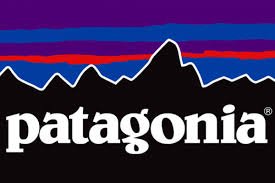
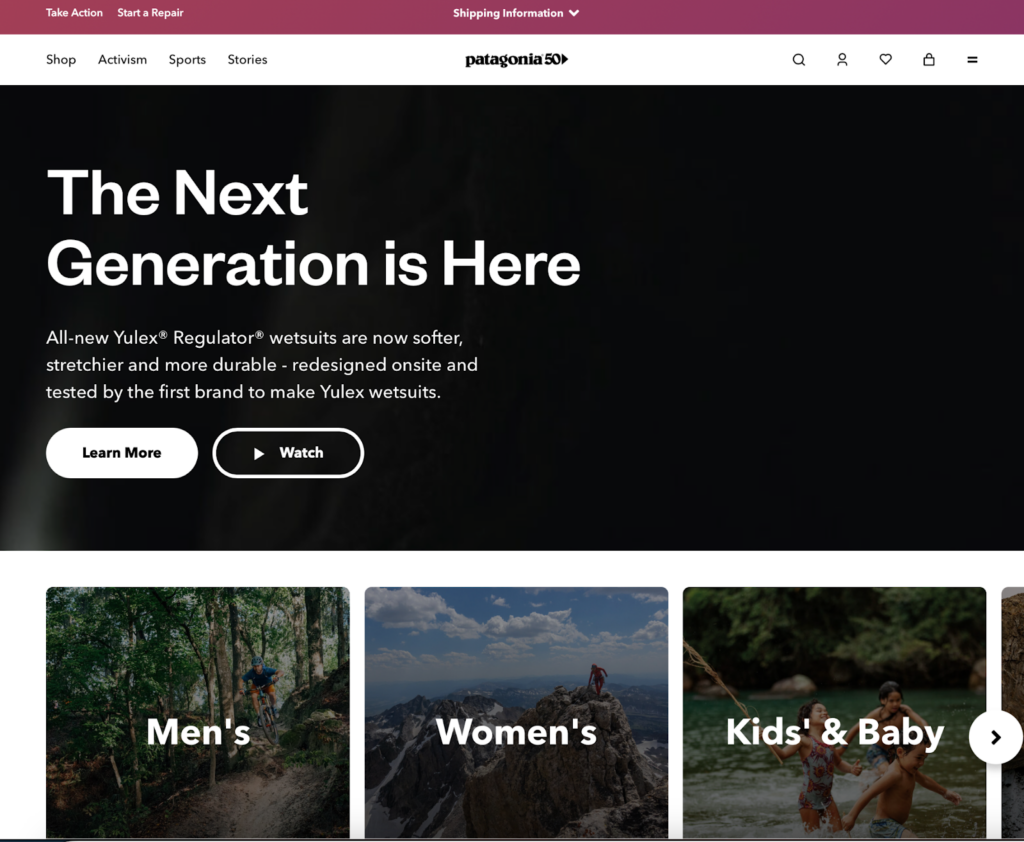
“Together, we can prioritize purpose over profit and protect this wondrous planet, our only home.”
Patagonia
🌎
How do they ensure their sustainability?
Patagonia puts sustainability at the center of their operation. They work to reduce, rather than simply offset, carbon emissions where it matters the most: in the supply chain and material manufacturing. They reduce their carbon footprint by removing high-impact virgin fossil-based fibers from their collections, using “Environmental Profit and Loss” to guide their production decision, and helping their suppliers to cut emissions. For example, Patagonia’s fall 2023 collection was made up mostly of preferred materials (91% by fabric weight), including Regenerative Organic Certified fibers, hemp, man-made cellulose fibers, recycled cotton, and recycled polyester. On top of that, Patagonia’s Worn Wear Program encourages customers to repair and recycle their products, extending the textile lifecycle and reducing waste. Lastly, Patagonia is certified as a B Corporation and a Bluesign® brand.
🌐
How do they ensure their ethics?
Patagonia commits to fair trade practices. Through the partnership with Fair Trade USA, they currently produce 86% of their clothes in 20 Fair Trade Certified™ factories. Patagonia pays a premium for every item produced in such factories, accumulating in a fund for workers to use in their chosen community projects, whether in healthcare or parent support or to withdraw as a cash bonus. Additionally, they have various social responsibility programs to prevent harm and create positive impacts on the lives of apparel workers in their supply chain. These include the Fair Labor Association, the Living Wage Program, the Migrant Workers Program, and the Responsible Purchasing Practices. Patagonia is also fully transparent about the locations of their facilities and suppliers.
🤝
Are they part of any giving-back programs?
Since 1985, Patagonia has pledged 1% of sales annually to environmental causes. They have awarded over $89 million in cash and in-kind donations to domestic and international grassroots environmental groups, making a difference in their local communities. In 2022, the founder of Patagonia gave away his family’s ownership of the company to the newly created Patagonia Purpose Trust and the not-for-profit organization Holdfast Collective, ensuring that all future profits from the company are used to fight the climate and extinction crisis.
🛍️
What is their product range?
- Best for: kidswear, menswear, womenswear
- Product range: shirts, pants, jackets, blazers, hoodies, sweatshirts, T-shirts, shorts, plus-size
- Price range: $$$
- Size range: XXS–XXXL
Happy Earth Apparel: Earth-First Organic Clothing Brand


“We’re not cool with compromise when it’s at the expense of our world. We’ll find a good way to do something, or we won’t do it.”
Happy Earth Apparel
🌎
How do they ensure their sustainability?
Happy Earth Apparel ensures sustainability by sourcing sustainable and organic textile materials, using recycled and recyclable packaging, and reducing waste. Firstly, Happy Earth Apparel uses a high proportion of organic cotton. For example, their organic sock collection is made with organic cotton with a small percentage of recycled nylon and elastane to enhance flexibility and moisture-wicking performance. Secondly, they use 100% post-consumer, recycled plastic to make durable packaging bags that can be recycled again. Also, these bags are lightweight, cutting down on transporting emissions and costs. And thirdly, Happy Earth Apparel has waste-reduction incentives regarding plastic (shipping in bulk), water (wastewater recycling and rain harvesting), and textile (low-waste cutting techniques). Furthermore, Happy Earth Apparel is Climate Neutral certified for reducing and offsetting their emissions. They also use solar energy in their supply chain to reduce their carbon emissions. Regarding emissions that can’t be avoided, they offset in clean energy projects in the US, Uganda, India, and China. These include providing energy-efficient stoves, capturing methane, and installing biodigesters in rural homes that convert manure waste into gas for cooking.
🌐
How do they ensure their ethics?
Happy Earth Apparel ensures their ethics by binding suppliers with a Code of Conduct covering four of ILO’s Fundamental Principles and Rights at Work. Additionally, over 95% of their products are made in Fairtrade-certified factories, while part of their final production stage is certified by Worldwide Responsible Accredited Production (WRAP). Finally, Happy Earth Apparel traces most of their supply chain.
🤝
Are they part of any giving-back programs?
Happy Earth Apparel actively participates in giving-back programs. As a member of 1% for the Planet, Happy Earth Apparel is committed to donating a minimum of 1% of their revenue to charitable organizations through their Tree Planting, Climate Change, and Trash Clean-Up projects. For example, consumers can choose to plant five trees for every purchase.
🛍️
What is their product range?
- Best for: womenswear, menswear
- Product range: shirts, T-shirts, sweatshirts, hoodies, jackets, bottoms, dresses, pants, leggings, shorts, socks, accessories
- Price range: $$
- Size range: XXS–XXL
Harvest & Mill: Carbon-Neutral Apparel Made in Organic and Traceable US-Based Supply Chain
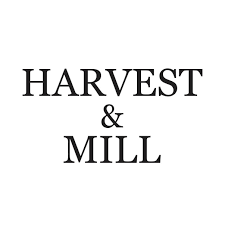
“We use zero fabric wholesalers or brokers and we use only 100% USA grown organic cotton yarns – because that is the only way to have true transparency in fashion and fabric chemical content.”
Harvest & Mill
🌎
How do they ensure their sustainability?
Harvest & Mill’s sustainability efforts focus on using low-impact materials, minimizing textile waste, and achieving carbon neutrality. Firstly, they source eco-friendly materials, from fibers to dyestuff to packaging. Harvest & Mill sources a high proportion of organic cotton, grown and milled in the US, for their socks, bottoms, and tops. They also opt for low-impact, natural, and non-toxic dyestuff for some of their apparel while eliminating dyes altogether for the Harvest & Mill’s Sock Collection, Organic Heirloom Brown Collection, and all their natural-white joggers and tops. Regarding packaging and shipping, Harvest & Mills uses plastic-free, reusable, recyclable, and easily compostable materials. Secondly, they minimize textile waste by designing patterns that reduce off-cuts while repurposing or recycling all extra fabrics. Thirdly, they achieve carbon neutrality by reducing and offsetting their emissions. Furthermore, they hold their supply chain entirely in the US, shortening the transporting distances (by five times). Additionally, they offset all their carbon emissions, including production, supply chain transportation, office operation, and all orders they ship out.
🌐
How do they ensure their ethics?
Harvest & Mill traces their whole supply chain and visits their suppliers regularly. They state that from the farm workers to the factory workers, everyone who works on Harvest & Mill clothing receives a fair wage, safe working conditions, the legally protected right to organize, and protection from discrimination.
🤝
Are they part of any giving-back programs?
Harvest & Mill is a member of Fibershed, a nonprofit that develops regional fiber systems that build soil and protect the health of Earth’s biosystems.
🛍️
What is their product range?
- Best for: womenswear, menswear
- Product range: shirts, T-shirts, pants, shorts, socks
- Price range: $$$
- Size range: S–XL
Unspun: Made-To-Order Denims From Low Impact, Localized, and Automated Production

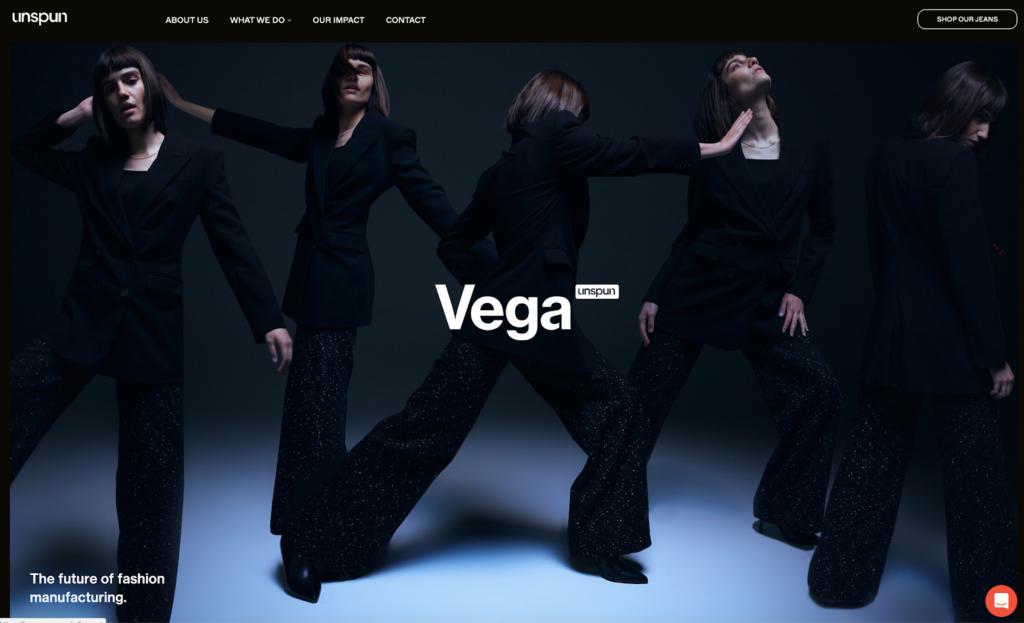
“We’re refashioning the status quo by building new ways to manufacture and new ways to think about the clothes we wear.”
Unspun
🌎
How do they ensure their sustainability?
Unspun’s sustainability efforts focus on reducing waste via their zero-inventory and on-demand business model. On the one hand, they offer made-to-order denim jeans. As their products are tailored to each order, they can eliminate the need to have a vast inventory and size range. On the other hand, they invented VegaTM, a 3D weaving technology that enables a one-step jump from yarns to clothes, eliminating cutting and sewing together with all the resulting fabric scraps. Consequently, their supply chain has fewer links, permitting greater locality and a lower transporting carbon footprint. In comparison with denim jeans made with air-jet weaving following the typical fashion supply chain, a pair of Unspun jeans made with 3D weaving following the Vega supply chain reduces global warming potential by 24%, primary energy demand by 25%, and blue water consumption by 1.4%. Lastly, Unspun is certified by B Corporation and Bluesign®.
🌐
How do they ensure their ethics?
Unspun traces most of their supply chain and visits their suppliers regularly.
🤝
Are they part of any giving-back programs?
Unspun is not known to be part of any giving-back programs.
🛍️
What is their product range?
- Best for: menswear, womenswear
- Product range: denim jeans, accessories
- Price range: $$$
- Size range: made to order, tailored to size
Nisolo: Carbon-Neutral Garments and Accessories From an Accountable and Transparent Brand


“As a brand focused on sustainability, we’re far from perfect. To hold ourselves more accountable in hopes the industry will begin to do the same, we’re raising the bar for transparency to an unprecedented level. ”
Nisolo
🌎
How do they ensure their sustainability?
Nisolo ensures their sustainability by reducing their impacts while working toward fixing the fashion industry. They focus on five critical areas: a living wage for all workers, net zero carbon emissions, transparency, accountability, and collaboration. Specifically, they aim to reach a balance between their carbon emissions and offsets. Firstly, Nisolo strives to reduce their carbon emissions throughout the life-cycle of their leather footwear and accessories. They opt for recycled and upcycled materials, sourcing synthetic materials made from recycled water bottles and leather as an economic by-product of the meat industry. Further down the life-cycle in the manufacturing stage, they use renewable energy for a significant percentage of their production. At the end of the product’s life-cycle, they facilitate recycling and responsible disposal through their takeback program with Soles4Souls, further reducing the life-cycle’s environmental impacts. Since 2018, Nisolo has offset all the carbon emissions that they haven’t managed to cut by partnering with Ecosphere+ to invest in forest conservation in the Peruvian Amazon—an offsetting project verified by Climate Neutral. Lastly, they are a carbon-neutral certified brand.
🌐
How do they ensure their ethics?
Nisolo ensures their ethics by upholding all their 1st tier factories to their Supplier Code of Conduct, which covers all of the ILO’s Fundamental Principles and Rights at Work. They ensure that every producer in their 1st tier factories is paid a living wage by monitoring individual living wages and tracking suppliers’ lowest wages. Nisolo also monitors health and safety issues with an internal procedure. Moreover, they are fully transparent about their impacts with their sustainability facts labels so that consumers can see the carbon footprint and the workforce involved with each product they purchase. Regarding animal welfare, Nisolo is a member of the Leather Working Group, which promotes sustainable environmental practices in the leather industry.
🤝
Are they part of any giving-back programs?
Nisolo founded The Lowest Wage Challenge in collaboration with another fashion label, ABLE, to challenge brands to share their lowest wages and strive toward paying their workers a living wage throughout their supply chains.
🛍️
What is their product range?
- Best for: menswear, womenswear
- Product range: shoes, bags, wallets, belts, socks, accessories
- Price range: $$$
- Size range: S–L
MATE the Label: Clean From Seed to Skin

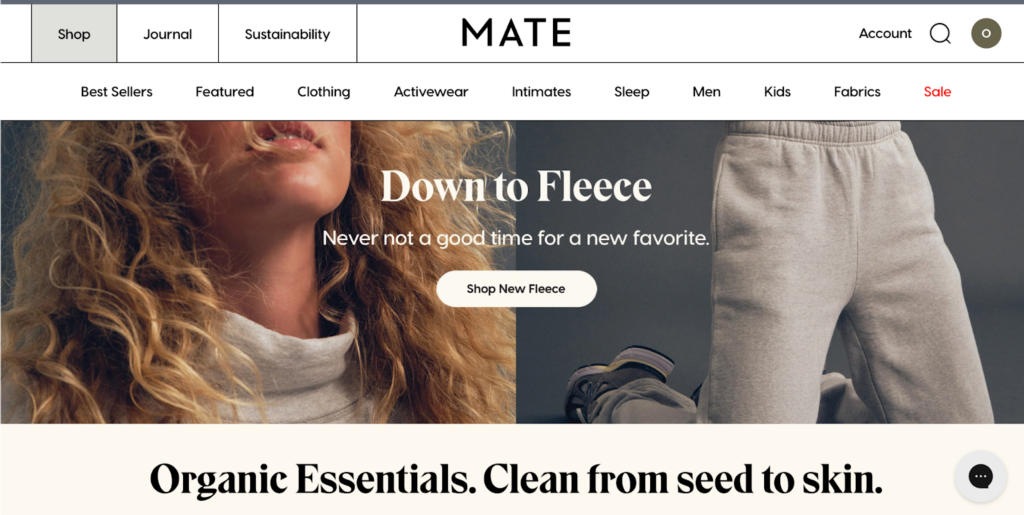
“To provide people everywhere with essentials that are clean from seed to skin.”
MATE the Label
🌎
How do they ensure their sustainability?
MATE the Label ensures sustainability by sourcing low-impact natural materials, reducing carbon footprints, and recycling. They opt for plant-based yarns (organic cotton, linen, TENCEL™ Lyocell) and non-toxic dyes. At least 50% of their clothing items are made with organic or recycled plant fibers. Furthermore, they manufacture locally (within 15 miles of their office) to reduce transportation emissions. The brand diverts their textile waste (pre- and post-consumer) into making new products. They have B Corporation and Climate Neutral certifications.
🌐
How do they ensure their ethics?
MATE the Label has a Code of Conduct covering four of the ILO’s Fundamental Principles and Rights at Work. Specifically, they do final production in US factories where they had banned, since day 1, the piece rate pay—a practice that often leads to wages below minimum wage and unsafe working conditions. They commit to creating safe, comfortable, and fair working environments for everyone in their supply chain, including farmers, garment workers, and recyclers. They also make regular visits to their suppliers.
🤝
Are they part of any giving-back programs?
In 2021, MATE the Label donated 1% of sales to nonprofit partners that are committed to saving the planet. On Giving Tuesday in 2021, they upped the donation from 1% of every purchase to 5%. Since their partnership with BEAM Impact, MATE the Label’s consumers have been able to choose which organization the donations of their order should go to.
🛍️
What is their product range?
- Best for: minimalistic, versatile clothes for women
- Product range: sweaters, dresses, pants, hoodies, maternity wear, blouses, T-shirts, jumpsuits, underwear
- Price range: $$
- Size range: XS–XL
Eileen Fisher: A Sustainable Fashion Brand Focusing on Eco-Friendly Materials and Textile Circularity
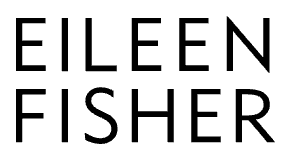
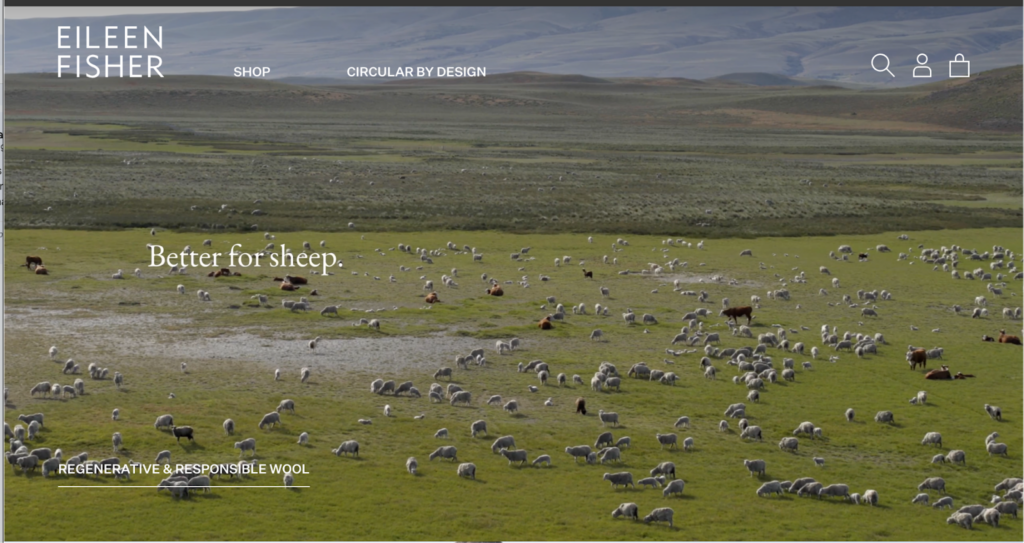
“The Biggest Thing We Can Do Is Reduce”
Eileen Fisher, founder of Eileen Fisher
🌎
How do they ensure their sustainability?
Eileen Fisher’s sustainability efforts focus on using eco-friendly materials, including recycled cotton, organic cotton, linen, and hemp, reducing greenhouse gas emissions generated from their operations and supply chain, reducing fabric and corporate waste, and recycling the brand’s used clothes back into new products. Their commitments to sustainable materials, circular systems, and environmentally friendly practices are demonstrated in initiatives like VISION 2020, Horizon 2030, and Renew. They are also certified as a B Corporation and a Bluesign® brand.
🌐
How do they ensure their ethics?
Eileen Fisher is committed to ethical practices. They have worker empowerment initiatives such as collective bargaining and the right to make a complaint. For example, their “Our Love, Peru” project supports over 450 families in and around Arequipa with higher fair trade wages and investments in the local community. Additionally, Their VISION 2020, set in 2015, tackled unethical labor practices. It has a formal animal welfare policy aligned with Five Freedoms. Additionally, Eileen Fishers uses sheep wool certified by the Responsible Wool Standard, appropriately addressing sheep’s welfare and the land they graze on.
🤝
Are they part of any giving-back programs?
Eileen Fisher supports many women-owned businesses. The brand has provided, since their inception, many grants for women, including the current program Supporting Women in Environmental Justice.
🛍️
What is their product range?
- Best for: elegant, classic, and casual women’s clothes
- Product range: dresses, blouses, sweaters, cardigans, pants, skirts and outerwear, shoes, accessories
- Price range: $$$
- Size range: XXS–3XL
Mara Hoffman: Womenswear Brand Promoting Mindful Fashion Habits
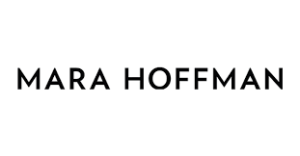
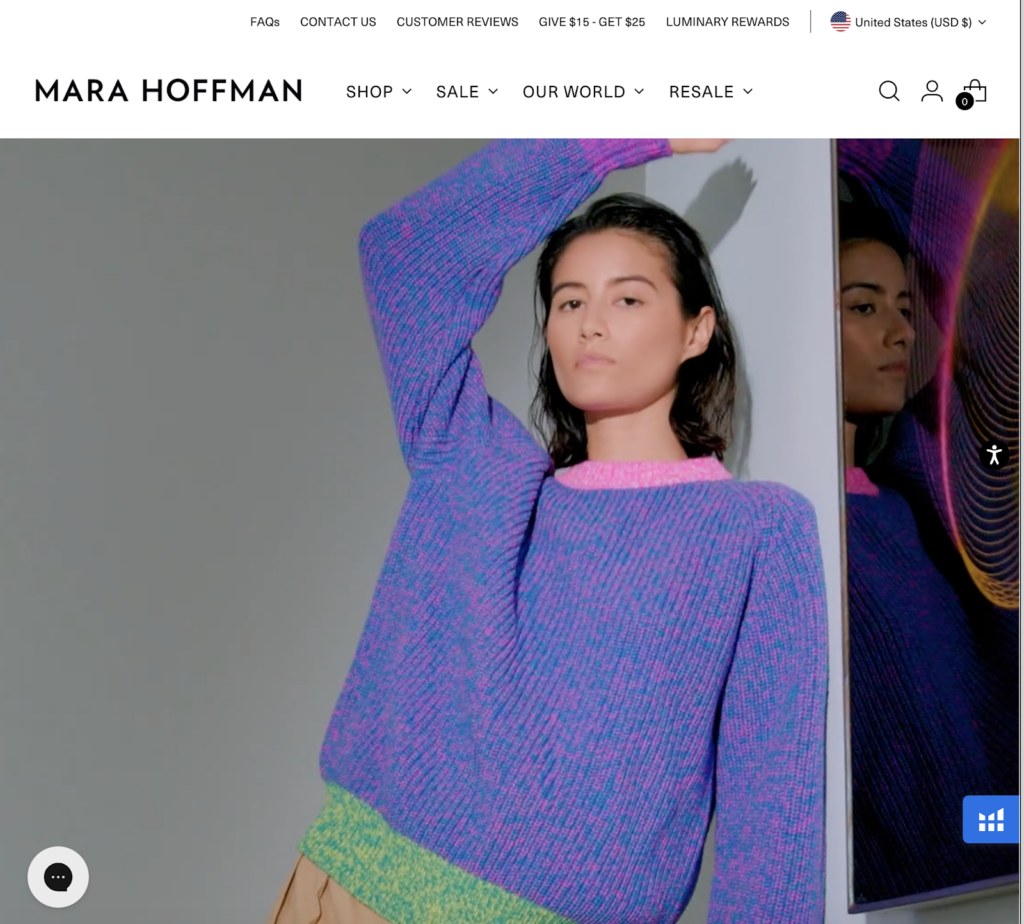
“As a team, we remain committed to reducing our footprint on the planet by extending the life of each garment, contributing to the regeneration of the environment, and advocating for the communities least responsible for, yet most impacted by, climate change.”
Mara Hoffman
🌎
How do they ensure their sustainability?
Mara Hoffman’s sustainability efforts focus on responsible materials, low-impact manufacturing practices, and mindful fashion habits. When sourcing for their designs, they prioritize natural, recycled, and organic materials over virgin synthetic fabrics while opting out of fur, leather, and feathers. Specifically, their modal fabrics are sourced from top-ranking man-made fiber producers on Canopy’s Hot Button Report, Lenzing and Birla Cellulose, while their lyocell fabrics are made by Lenzing and the circular fashion brand Circ. Additionally, their packaging is free from plastics and uses natural materials that can be easily recycled. Since 2019, they have transitioned into 100% recycled paper mailers for small shipments. Regarding the manufacturing stage, Mara Hoffman aims to minimize waste and energy usage wherever possible. For example, they choose digital printing to reduce fabric waste and water waste. Lastly, they encourage mindful fashion habits such as “Wear More, Wash Less“, repairing, and repurposing to keep garments lasting a long time while reducing the climate impact. They also have a platform, Full Circle Marketplace, where you can buy and sell pre-owned Mara Hoffman garments.
🌐
How do they ensure their ethics?
Mara Hoffman works with Fair Trade Certified™ products and factories to ensure workers receive premium work payment. Additionally, they regularly conduct in-person factory visits. They also support the growth of smaller factories with incentives like sponsoring website development and delivering training programs on transparent record-keeping. For transparency, they publish the list of the Tier 1 factories where the last stage of production happens.
🤝
Are they part of any giving-back programs?
As Mara Hoffman has shifted toward sustainability, they have increased contributions to and participation in social justice movements. They give back in various ways, including sponsoring, fundraising, and mentoring, in partnership with many organizations working toward social justice and sustainability. The list includes Black in Fashion Council, CanopyStyle, Equality Now, Woman March, and Sweet Freedom Farm.
🛍️
What is their product range?
- Best for: womenswear
- Product range: dresses, tops, blouses, pants, skirts, swimwear, jumpsuits, playsuits, bodysuits, plus-size
- Price range: $$$
- Size range: XS–XXXL
Christy Dawn: Vintage-Inspired Dresses Made With Deadstock and Organic Fabrics

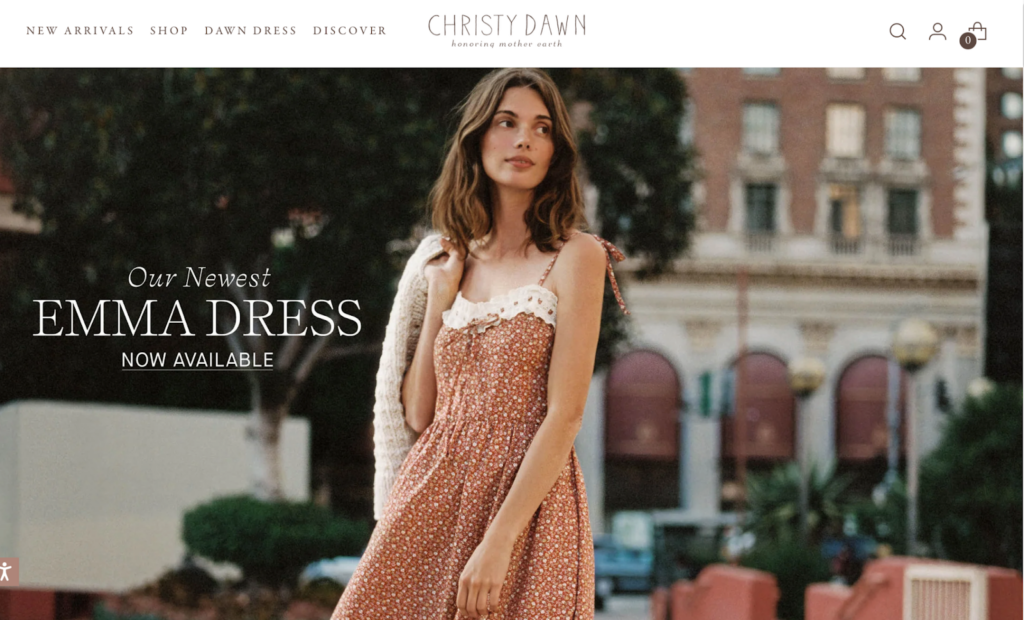
“We forge mutually beneficial relationships with all of the people and ecosystems we work with, from the farm and weavers in India to dressmakers and photographers in Los Angeles.”
Christy Dawn
🌎
How do they ensure their sustainability?
Christy Dawn ensures sustainability by sourcing eco-friendly materials, making long-lasting products, and offsetting their carbon emissions. They use a high proportion of low-impact textiles, including deadstock fabrics, organic cotton, and regenerative cotton. By diverting deadstock fabrics (velvet, wool, fleece, and leather) away from landfills and into their dresses, tops, and shoes, they lower their carbon footprint while reducing textile waste. Additionally, Christy Dawn sources cotton from a regenerative farm, harvesting the fibers and renourishing the land. The Christy Dawn × Oshadi Farm is a collaboration that increases the solid health and biodiversity of 219 acres of land and addresses climate change by drawing down more than 2 million tons of carbon from the atmosphere. Further down the life-cycle in the manufacturing stage, Christy Dawn opts for construction techniques that enable them to produce high-quality, timeless pieces that consumers can wear for a long time, reducing the impact of owning clothes. Regarding their climate impact, Christy Dawn eliminates, captures, or mitigates all of the carbon emissions created from manufacturing and shipping their products via their partnership with EcoCart. Lastly, they partner with ThreadUp to give pre-loved clothes the best possible chance at a second life, extending textile lifespans and reducing the overall environmental impacts of owning an item of clothes.
🌐
How do they ensure their ethics?
Christy Dawn traces their supply chain and ensures that some of their suppliers pay living wages.
🤝
Are they part of any giving-back programs?
Christy Dawn is not known to be part of any giving-back programs.
🛍️
What is their product range?
- Best for: womenswear
- Product range: dresses, knitwear, outerwear, jackets, tops, blouses, bottoms, loungewear, jumpsuits, overalls, shoes, plus-size accessories
- Price range: $$$
- Size range: XS–3XL
LA Relaxed: Garments Ethically Designed and Made in LA
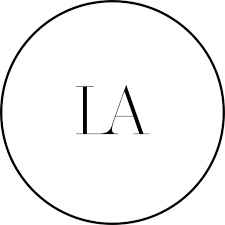
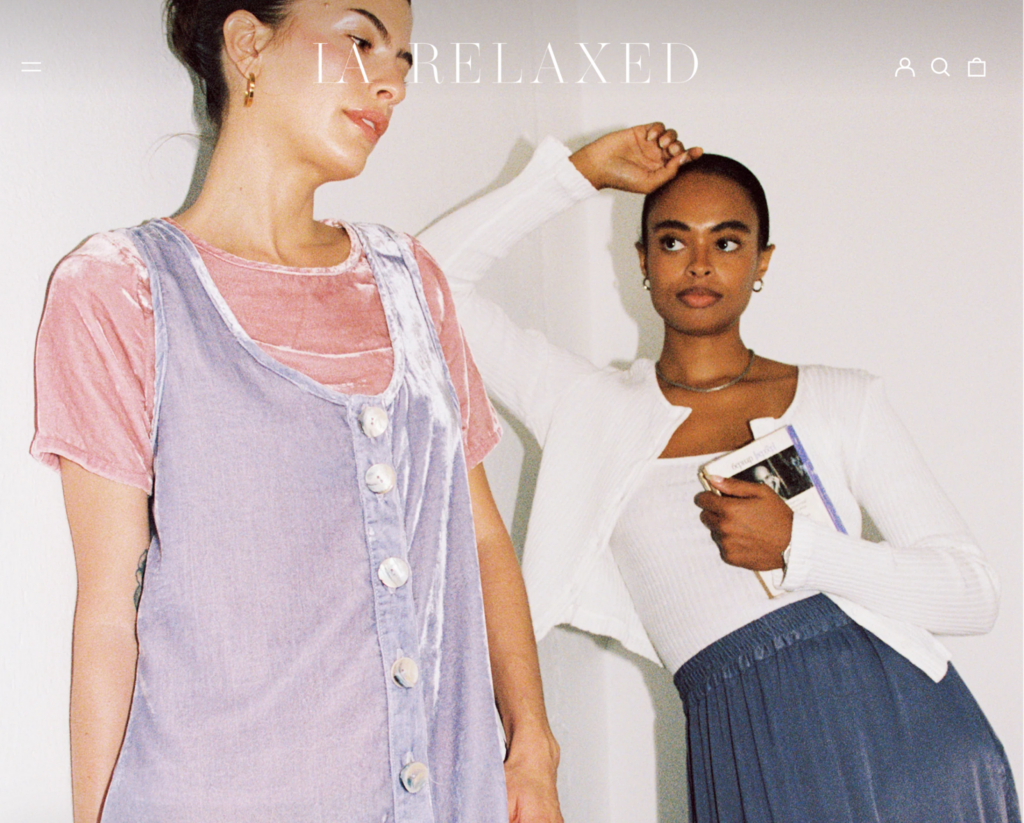
“We measure our impact in footsteps, not a footprint and assemble each garment in under one hundred footsteps.”
LA Relaxed
🌎
How do they ensure their sustainability?
LA Relaxed ensures sustainability by sourcing natural and non-toxic fibers and dyestuffs, manufacturing locally, and minimizing textile and plastic waste. They use a high proportion of eco-friendly textile materials, including GOTS-certified organic cotton, linen, and TENCELTM Lyocell. Their fabrics are dyed at Bluesign®-certified local dye houses, using low-impact and non-toxic dyes. Furthermore, LA Relaxed sources most of their materials within a 10-mile radius and has their clothes designed, cut, and sewn under one roof (within 100 footsteps, to be specific). Sourcing and manufacturing locally reduces the transporting distances, resulting in a relatively low carbon footprint. Lastly, the brand minimizes textile and plastic waste by sourcing deadstock fabrics, having a limited production run, and using no plastics in packaging products or shipping supplies. Specifically, all of LA Relax’s products are tagged, packed, and shipped using recycled paper-based materials or biodegradable glassine. Their hangtags and labels are a mix of linen, recycled composite, and paper.
🌐
How do they ensure their ethics?
LA Relaxed has a Code of Conduct that covers all of the ILO’s Fundamental Freedoms principles. Furthermore, they trace most of their supply chain and ensure payment of a living wage in the final stage of production. Since 2016, they have paid living wages, offered on-the-job training programs, and been committed to a safe and fair environment.
🤝
Are they part of any giving-back programs?
LA Relaxed donates garments to local charities.
🛍️
What is their product range?
- Best for: womenswear
- Product range: tops, bottoms, dresses, accessories
- Price range: $$
- Size range: XS–XL
Subset: Carbon-Neutral Organic Cotton Underwear


“By seeking out the most environmentally responsible processes, low-impact fabrics and ethical manufacturing, we swap the greenwashing for integrity and accountability. ”
Subset
🌎
How do they ensure their sustainability?
Subset prioritizes sustainability by sourcing a high percentage of low-impact fabrics, offsetting carbon emissions, and facilitating underwear recycling. Firstly, they use GOTS-certified organic cotton, TENCEL™, recycled polyester, and regenerated and recycled nylon to reduce environmental impacts. For example, the Tank Bralette contains certified organic cotton (95% of the fabric), recycled nylon (83% of the straps), and TENCEL™ (69% of the band). Organic cotton, in particular, accounted for 92,1% of their fiber portfolio for 2022. Secondly, they reduce the impact of their carbon emissions with offsetting projects verified by Climate Neutral. For example, in 2022, they supported clean energy projects in India and Kenya. More importantly, they find ways to reduce their carbon footprint, such as using solar-powered energy in their supply chain and localized sourcing. Thirdly, in 2018, Subset launched the world’s first recycling program to save underwear, socks, bras, and tights from ending up in landfills. In 2022, they took back nearly 1 million of their own clothing items, as well as those of other brands.
🌐
How do they ensure their ethics?
Subset ensures their ethics by being transparent about their supply chain, all the way from farming to ginning, spinning, knitting, finishing, and packaging. Much of their supply chain is certified by Fairtrade International – Small Producers Organisations and Global Organic Textile Standard (GOTS). They also ensure that workers at their suppliers are paid a living wage. Regarding the impact of their operation, on each product page, Subset discloses the item’s impact, including not only carbon emission (which is offset) but also the reduction of water usage and synthetic pesticides thanks to their use of organic cotton.
🤝
Are they part of any giving-back programs?
Subset donates new, clean underwear to individuals and communities in need. In 2022, they donated over 2,260 items to organizations across the US, including Bronx Fire Relief, I Support the Girls, and Cultivate Initiatives. They also hold team volunteer days where their staff get together and work toward good causes, such as building an outdoor library.
🛍️
What is their product range?
- Best for: womenswear, menswear
- Product range: bras, panties, loungewear, maternity wear, plus-size
- Price range: $$$
- Size range: 2XS–4XL
The Standard Stitch: Size-Inclusive, Sustainable, and Ethically Made Clothing


“We’re setting the bar higher by rethinking the way clothes are made at every step of the process. We believe that cleaner, more thoughtful practices can change the way fashion impacts people and the planet.”
The Standard Stitch
🌎
How do they ensure their sustainability?
The Standard Stitch ensures their sustainability by sourcing a high proportion of low-impact materials and reducing their water use and carbon emissions. Firstly, they blend cotton fabric scraps from cutting waste with certified organic cotton to make their fabrics, reducing textile waste and, at the same time, increasing the demand for more sustainable agriculture practices in the industry. Additionally, all the trims—labels, swing tags, and drawcords—are made with only certified recycled or organic materials. These components are printed with eco-friendly inks, which are fully biodegradable and recyclable. The Standard Stitch is also environmentally conscious about their packaging, using recyclable and biodegradable kraft mailers with 100% recycled content. Their poly bags are either compostable or recycled. Secondly, further down the life-cycle in the manufacturing stage, the brand opts for non-toxic and low-impact dyes, requiring less rinsing water. Thirdly, they reduce their carbon emissions by operating through a localized supply chain based in Los Angeles, only miles from their main office, and avoiding expedited shipping, which has a high carbon footprint. They also offset their emissions in the Medford Spring Grassland Conservation Project. Striving toward closing the loop, The Standard Stitch has set up the Re-Stitch x Retold program, which takes back pre-loved items to be recycled into new materials.
🌐
How do they ensure their ethics?
Standard Stitch has 100% traceability into their Tier 1 and Tier 2 suppliers and has mapped out 50% of Tier 3. Their Vendor Code of Ethics covers all of the ILO’s Fundamental Principles and Rights at Work.
🤝
Are they part of any giving-back programs?
The Standard Stitch is not known to be part of any giving-back programs.
🛍️
What is their product range?
- Best for: womenswear
- Product range: dresses, shorts, sweatshirts, T-shirts, tanks, sweatpants, joggers,
- Price range: $$$
- Size range: XS–5XL
Triarchy: Plastic-Free Stretch Denim Made Ethically, Responsibly, and Sustainably
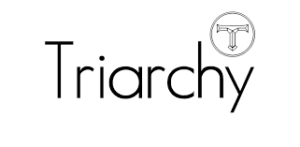
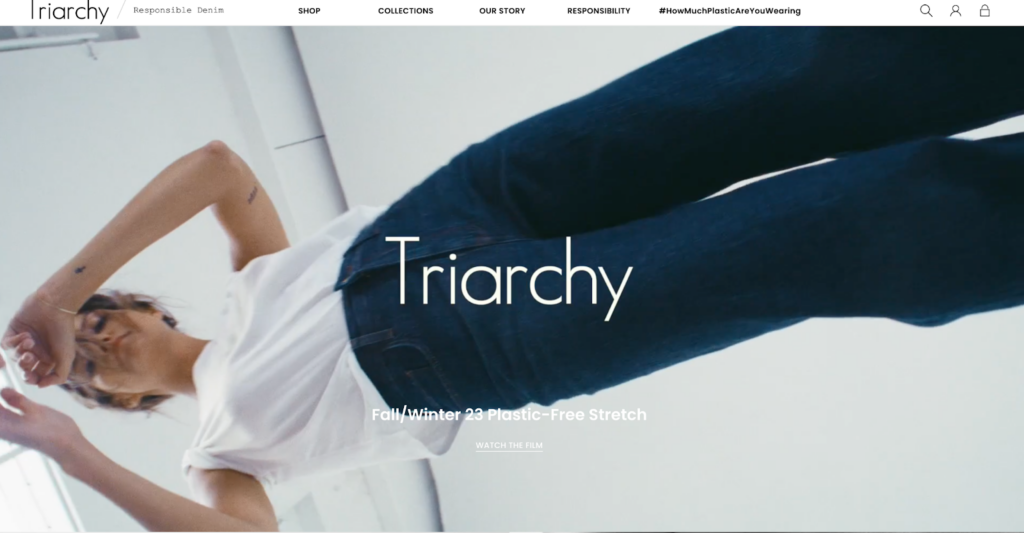
“Triarchy exists to outfit our customer with the best pair of jeans possible. In every sense of the word best.”
Triarchy
🌎
How do they ensure their sustainability?
Triarchy commits to plastic-free stretch denim. They source natural rubber instead of conventional petroleum-based plastic so that their denim clothes are microplastic-free and degrade in a natural environment within two years. Low-impact materials, including GOTS-certified organic cotton and GRS-certified recycled cotton, account for a high proportion of their denim materials. Further down the life-cycle in the manufacturing stage, Triarchy uses advanced technology such as ozone, e-flow, and laser processes to replace harmful wash practices that depend on chemicals. Additionally, they reduce water use with a closed-loop system and recycle all textile offcuts. Lastly, they offset the carbon for everything they make, ensuring every pair of Triarchy denim jeans is carbon neutral.
🌐
How do they ensure their ethics?
Triarchy is fully transparent about their supply chain and the ethics within their suppliers’ factories. They disclose all of their responsibility data via third-party auditor GreenStory and expose their supply chain to Renoon. Their Supplier Code of Conduct also covers four of the ILO’s Fundamental Principles and Rights at Work.
🤝
Are they part of any giving-back programs?
Triarchy contributes a portion of each sale to Isla Urbana to build and install rainwater catchment systems for people in and around Mexico City without access to water. Additionally, they plant a tree for every pair of jeans sold via their partnership with One Tree Planted.
🛍️
What is their product range?
- Best for: womenswear
- Product range: denim, jackets, blazers, shorts
- Price range: $$$$
- Size range: XS–L
TomboyX: Gender-Neutral Clothing Brand Committing to Sustainability
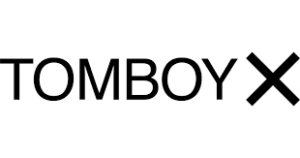

“When it comes to sustainability, we start right at the beginning.”
TomboyX
🌎
How do they ensure their sustainability?
TomboyX ensures sustainability by sourcing low-impact materials for fabrics and packaging. They use organic and recyclable fabrics in as many designs as possible without compromising quality, comfort, or cost. Specifically, they use TENCELTM Modal made from renewable beechwood pulp in a closed-loop system. Additionally, TomboyX sources part of their cotton from BCI-certified suppliers, guaranteeing a sustainable and farmer-centric process. All their cotton products are further certified by OEKO-TEX®. On top of that, TomboyX has a Recycled Selection, including items like recycled tucking underwear, which demonstrates their commitment to reducing waste and lowering their environmental impacts. Regarding packaging, TomboyX’s orders are packed in individual biodegradable zipper bags. In 2022, TomboyX HQ moved to a new Gold LEED-certified building that operates more efficiently in terms of energy and water while generating less waste.
🌐
How do they ensure their ethics?
TomboyX traces part of their supply chain and visits all suppliers in the final production stage to monitor health and safety issues. They state that most of their facilities are certified by WRAP and the Fair Labor Association, two leading organizations guaranteeing fair treatment and competitive wages for factory workers.
🤝
Are they part of any giving-back programs?
TomboyX fosters a diverse circle of LGBTQ+ folks, athletes, people outside of the confined size spectrum, and those who just like having quality, all-day comfort.
🛍️
What is their product range?
- Best for: gender neutral clothing
- Product range: underwear, bras, swimwear, swimwear, activewear, loungewear, sleepwear, compression tops, compression tanks, tees, accessories
- Price range: $$$
- Size range: XS–6XL
Reformation: Clothes Made Smarter, Better, and for Good

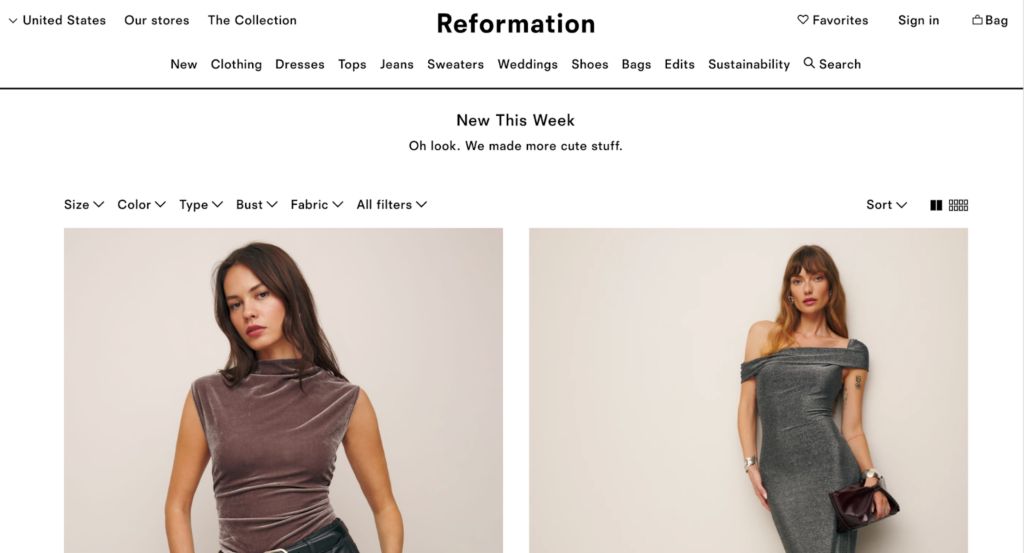
“We’re committed to pushing the industry forward and investing in future-focused solutions, which is why we’re a certified Climate Neutral company and will be Climate Positive by 2025.”
Reformation
🌎
How do they ensure their sustainability?
Reformation commits to better fabrics, aiming to trade all virgin materials for recycled, regenerative, or renewable ones by 2025. Their most preferred fabrics include recycled cotton, regenerative cotton, TENCEL™ Lyocell, TENCEL™ x REFIBRA™, and deadstock, accounting for 32% of all their clothes. They have committed to becoming circular by 2030 by designing out waste at every stage of production, turning any occurring production waste into new products, and using renewable and regenerative practices for necessary virgin materials. Furthermore, their RefRecycling incentive enables customers to sell their preloved Reformation clothes for store credits. Such items will be broken down into fibers and turned into new products. Reformation also connects their suppliers with environmental solutions such as renewable energy, water-saving technologies, energy reduction solutions, chemical input optimization, and wastewater management. In addition to that, they openly share the carbon and water footprint of each product they make, fostering transparency and accountability in the fashion industry. Last but not least, Reformation is Bluesign® and Climate Neutral certified.
🌐
How do they ensure their ethics?
Reformation is fully transparent about where their clothes are made and the practices in such factories. Their Supplier Code of Conduct is based on International Labor Organization (ILO) standards. Furthermore, their factory list shares many details about their factories, including whether a union and a collective bargaining agreement are present and the last audit. They have also aligned with the Transparency Pledge and are participating in the Open Supply Hub to expand on the details that are made public so they can be more accountable for the working conditions in their partner factories. On top of that, they give workers at their vendors a voice to bring up problems regarding their working conditions, level of happiness, working hours, and wages, and collaborate with vendors to ensure necessary improvements. Reformation is also a member of the Fair Labor Association, an initiative committed to promoting fair labor standards worldwide.
🤝
Are they part of any giving-back programs?
Reformation is not known to be part of any giving-back programs.
🛍️
What is their product range?
- Best for: womenswear
- Product range: dresses, tops, bodysuits, denim, cardigans, sweaters, wedding dresses, shoes
- Price range: $$$
- Size range: XS–XL
Neu Nomads: An Ethic-First Brand With a Commitment to Sustainability and Traceability
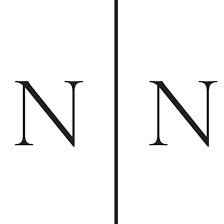
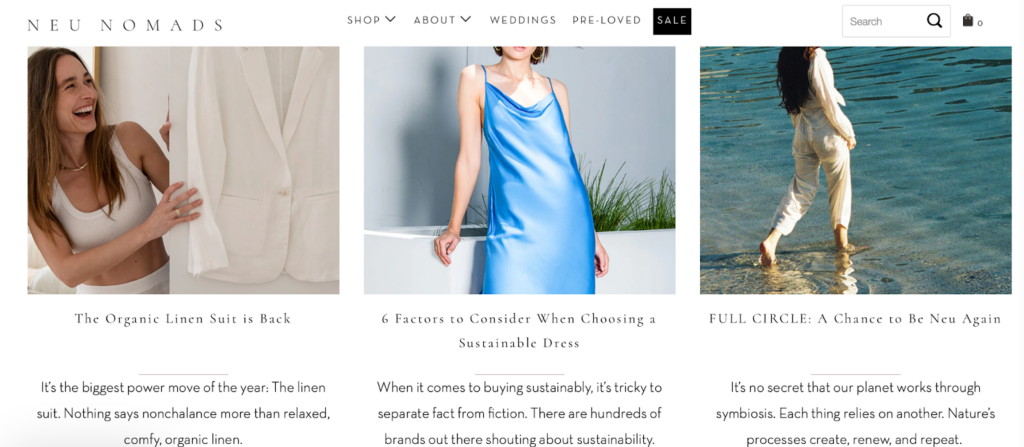
“We always consider how to create something beautiful with the lowest possible impact on the world.”
Karen Wood, founder of Neu Nomads
🌎
How do they ensure their sustainability?
Neu Nomads prioritizes sustainability by opting for eco-friendly materials, using renewable energy in their supply chain, and reducing waste with a platform to resell and reuse pre-loved clothes. Their biodegradable, plant-based fabrics include linen, certified organic cotton, and TENCEL™ (lyocell fabrics produced by Lenzing). Furthermore, their factory in India is powered by solar energy, with all the excess energy directed back to the local community. Water used for dying fabrics is captured, purified, and processed using non-toxic and AZO-free dyes. Lastly, nearly 90% of the water used during dyeing is recycled in a common effluent treatment plant.
🌐
How do they ensure their ethics?
Neu Nomads ensures their ethics through fair labor practices and transparent supply chains. They also make regular inspection visits to their suppliers. On top of that, 85% of their garments are produced in a family-owned factory in Delhi that maintains healthy working conditions, healthcare benefits, and compensation far above the living wage.
🤝
Are they part of any giving-back programs?
Neu Nomads is not known to be part of any giving-back programs.
🛍️
What is their product range?
- Best for: luxurious essential clothing items for female modern travelers
- Product range: shirts, scarves, dresses, pants, jackets, blazers, knitwear, tops, blouses, T-shirts, lingerie
- Price range: $$$
- Size range: XXS–XXL
Whimsy + Row: Reducing Eco-Footprint With Every Step of the Process
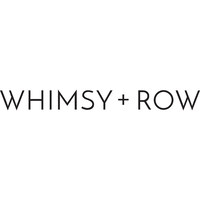
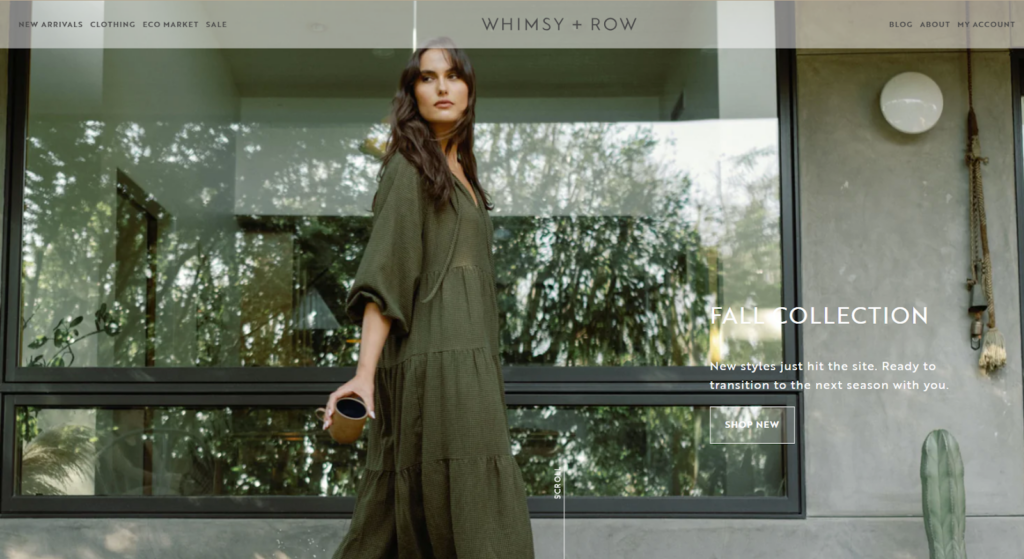
“Growing and being a good company.”
Rachel Temko, founder of Whimsy + Row
🌎
How do they ensure their sustainability?
Whimsy + Row prioritizes sustainability by opting for low-impact materials like certified organic cotton, linen, TENCELTM Lyocell, and deadstock/upcycled fabrics. Their clothes are made with low-impact dyes and recycled water. Furthermore, they reduce waste through their small-batch production of long-lasting products and efforts to close the loop to reach zero waste. The final stages of manufacturing are done locally to reduce the transportation footprint. They further offset their carbon emission with the Carbon Fund. Lastly, Whimsy + Row is carbon neutral.
🌐
How do they ensure their ethics?
Whimsy + Row clothing is made within a few miles of their office, enabling weekly factory visits. The brand also ensures that fair wages are given and that workers are being treated fairly.
🤝
Are they part of any giving-back programs?
Whimsy + Row actively participates in giving-back programs that support environmental causes and community initiatives. Specifically, they donate money to organizations like One Tree Planted, People Tree, Global Fund for Women, Black Lives Matter, Reclaim the Block, Black Vision Collective, Downtown Women’s Health Center, and Feeding America. Once a month, their employees also donate their time to community work, such as cleaning the beach or planting trees.
🛍️
What is their product range?
- Best for: womenswear with eco-friendly, contemporary designs
- Product range: skirts, denim, dresses, pants, tops, blouses, shorts, lingerie, plus-size
- Price range: $$$
- Size range: XS–3XL
United by Blue: A Bag Brand That Designs Out Waste at Both Ends of the Life-Cycle

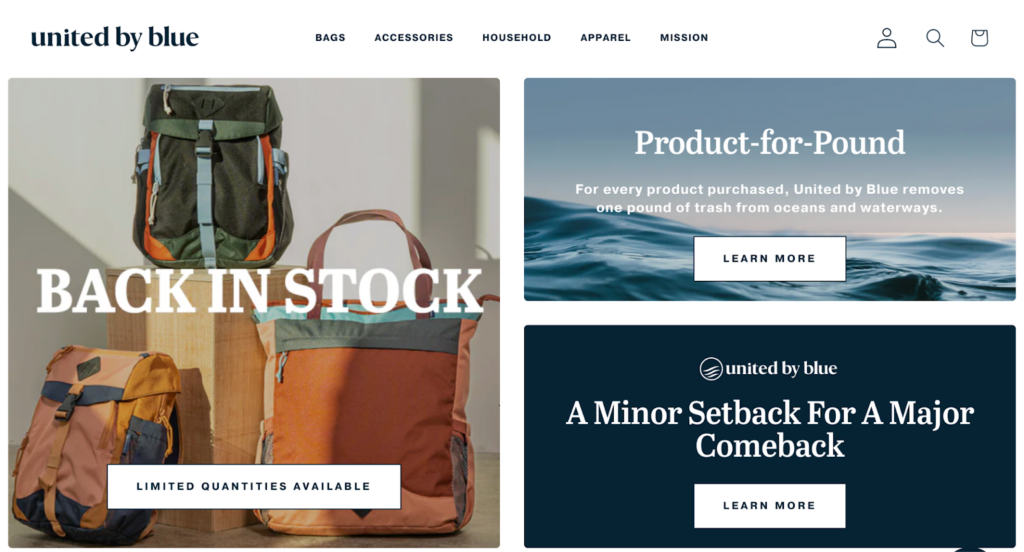
“Our hope is that through engaging cleanups, better business practices, and trash-cleaning products we can clean up the planet and the fashion industry one sustainable choice at a time. ”
United by Blue
🌎
How do they ensure their sustainability?
United by Blue ensures sustainability by designing out waste. In particular, they make durable products from sustainably sourced, low-impact materials. They also make them in factories with some of the highest social and environmental health certifications on a slow fashion timeline. Firstly, they source a high proportion of lower-impact materials. They prioritize biodegradable, regenerative fibers, recycled materials, and deadstock fabric. United by Blue’s products are also based on some of the most sustainable fabrics, including organic cotton (with GOTS and OCS certifications), recycled cotton (with GRS and OEKO-TEX® certifications), recycled wool (with RWS certification), recycled polyester (with GRS certification), recycled nylon (with GRS certification), and hemp (and SofthempTM). With high-impact fabrics like cashmere and viscose, the brand opts for the most sustainable options, including recycled cashmere and Lenzing’s EcoVero™ (a sustainably sourced viscose manufactured in a closed-loop system). Furthermore, United by Blue commits to having no single-use plastic within their packaging. Since 2022, all of their direct-to-consumer shipments have been packed in compostable poly bags, paper and cardboard boxes, and recyclable kraft tapes. Regarding their climate impact, the brand measures and reduces carbon emissions, especially in four key areas: shipments, production, energy, and stores. Their emission reduction measurements focus on reducing and consolidating shipments, transporting overseas products by boat, seeking renewable energy options, and prioritizing energy-efficient appliances, lighting, and materials in their physical stores and offices.
🌐
How do they ensure their ethics?
United by Blue binds all their suppliers with a Code of Conduct covering all of ILO’s Fundamental Principles and Rights at Work. They trace most of their supply chain and publicly share on their website their manufacturing partners, which are certified with some of the top sustainability standards (Bluesign®, Business Social Compliance Initiative Code of Conduct – BSCI, Global Organic Textile Standard, Social Accountability International – SA8000, and Worldwide Responsible Accredited Production – WRAP). Regarding animal welfare, they source wool certified by the Responsible Wool Standard, ensuring the ethical treatment of sheep in their supply chain.
🤝
Are they part of any giving-back programs?
United by Blue removes one pound of trash from oceans and waterways for every product purchased. They achieve this by organizing community, corporate, DIY, high-yield, and international cleanups.
🛍️
What is their product range?
- Best for: menswear, womenswear
- Product range: bags, wallets, blazers, beanies, scarves
- Price range: $$$
- Size range: S–XXL
Conscious Step: Organic Cotton Socks Free of GMOs, Pesticides, and Insecticides

“We’re embracing slow fashion with quality that’s made to last and designs that outlive trends. For us, buying better beats buying more.”
Conscious Step
🌎
How do they ensure their sustainability?
Conscious Step ensures sustainability by using a high proportion of eco-friendly materials, including organic cotton. Their socks are made with cotton from organic farms in India, which is non-GMO, pesticide- and insecticide-free. Their organic cotton fabrics have certifications from Fairtrade and the Global Organic Textile Standard (GOTS). Additionally, Conscious Step lowers the environmental impact of their materials by sourcing recycled polyester and recycled nylon instead of virgin synthetic fabrics in some textile products.
🌐
How do they ensure their ethics?
Conscious Step commits to fair and transparent working conditions. They ensure payment of a living wage in most of their supply chain and also monitor health and safety issues through a third-party audit of their manufacturing partners. They also audit most of their supply chain and trace all of their suppliers.
🤝
Are they part of any giving-back programs?
Conscious Step is a member of 1% for the planet, pledging at least 1% of annual sales to environmental solutions for a healthy planet. Every Conscious Step purchase supports one of their partner organizations and the communities they serve. So far, they have donated $1,121,917 to various causes to restore the oceans, educate kids, save animals, etc.
🛍️
What is their product range?
- Best for: kidswear, menswear, womenswear
- Product range: socks, sweatshirts, plus-size
- Price range: $$$
- Size range: XXS–XXL
Why Is It Important to Buy Products Made of More Sustainable Fabrics
It is important to buy products made of more sustainable fabrics because a sustainable textile industry has a lower carbon footprint, helps save natural resources, and is better for forests, animals, and humans.
Buying Sustainable Fabrics Reduces Your Carbon Footprint
The production of clothing and footwear is estimated to contribute 10% of global greenhouse gas emissions—more than all international flights and shipping combined. If the fashion industry were a country, it would be the fourth largest emitter of carbon dioxide.
One way to reduce the carbon footprint of the clothes you buy is to opt for sustainable fabrics. Sustainable fabrics, which are often made with natural or recycled fibers, have relatively low carbon footprints compared to petroleum-based fabrics. For example, organic cotton made in the US has a carbon footprint of 2.35 kg CO2 (per ton of spun fiber)—a quarter of polyester’s carbon footprint.
Buying Sustainable Fabrics Reduces Demand for Natural Resources and Waste Management
The textile industry uses water and land to grow cotton and other fibers. It is estimated that 79 billion cubic meters of water were used for the sector worldwide in 2015. For example, producing a single cotton T-shirt requires as much water as one person drinks for 2.5 years (2,700 liters of fresh water).
Worse yet, the textile economy is vastly more linear than circular: the largest amount of resources used in clothes ended up in landfill (instead of being recycled to remake clothes). According to a report by the Ellen MacArthur Foundation,
- Less than 3% of materials used in the textile economy in 2015 came from recycled sources.
- In other words, more than 97% of resources used in making clothes are newly extracted.
When clothing items are disposed of within a short period of time—under a year in the case of half of the fast fashion clothes—the natural systems that provide raw materials for fabrics don’t have enough time to recover and regenerate, which could lead to ecological breakdown.
Sustainable fabrics are made with less water and emissions while lasting longer:
- Because they are durable, you don’t need to buy new clothes too often.
- Thus, you help reduce the pressure to extract more resources for making new items.
Similarly, making and consuming sustainable fabrics made with recycled materials reduces the demand for virgin materials while helping tackle waste management.
Buying Sustainable Fabrics Encourages Sustainable Management of Forests
Sustainable natural fiber fabrics are made with raw materials from forests and plantations that are sustainably managed, such as complying with FSC standards.
When you buy sustainable natural fiber fabrics, you discourage unsustainable forestry practices like illegal logging. You can help reduce deforestation, biodiversity loss, and the effects of climate change.
Buying Sustainable Fabrics Encourages Fairer Treatment of Animals
The fashion industry is rife with animal mistreatment when it comes to making animal-based fabrics like wool or silk. Every year, billions of animals suffer and die for clothing and accessories.
Buying sustainable vegan alternatives can help to reduce the pressure on raising more and more animals to meet the demand for animal-based fabrics while sacrificing their well-being and lives.
Suppose you have to buy fabrics made with, for example, wool or silk; make sure you only choose brands committed to cruelty-free products. In that case, you help advocate better treatments for animals raised within the textile industry.
Using Sustainable Fabrics Encourages Fairer Treatment of Textile Workers
Recent statistics from UNICEF estimated as many as 170 million child laborers worldwide, many of whom were engaged in some form of work in the textile industry. They don’t get paid minimum wages and often work long hours.
When you buy sustainable fabrics from brands transparent about the working conditions at their factories, you discourage the use of child labor and help promote better working conditions for textile workers.
How Can You Generally Buy More Sustainable Fabrics
The key to sustainably buying fabrics is to check on relevant environmental and original certifications.
For natural fabrics:
- Global Organic Textile Standard (GOTS): A globally recognized certification system that ensures a certain threshold of organic content has been met. It covers manufacturing, packaging, labeling, transportation, and distribution (but not what happens in the fields where crops are grown).
- USDA Certified Biobased Product: The USDA BioPreferred® Certification is a voluntary certification offered by the United States Department of Agriculture. The certification identifies products made from plants or other renewable materials.
- Ecolabel: Ecolabel is the official European Union voluntary label recognized worldwide for certified products with a guaranteed, independently verified low environmental impact. The label requires high environmental standards throughout the entire life-cycle: from raw material extraction through production and distribution to disposal. It also encourages companies to develop innovative, durable, easy-to-repair, and recyclable products.
For natural fiber semi-natural/semi-synthetic fabrics:
- Forest Stewardship Council: An FSC certification ensures that the wood (or wood-like material) comes from responsibly managed forests that provide environmental, social, and economic benefits.
There are two types of FSC Certification:- FSC Forest Management Certification, with a focus on the origin of the wood—the forest.
- FSC Chain of Custody Certification, which focuses on the path from the forest to the customer’s home.
- Program for Endorsement of Forest Certification: PEFC’s approaches to sustainable forest management are in line with protecting the forests globally and locally and making the certificate work for everyone. Getting a PEFC certification is strict enough to ensure the sustainable management of a forest is socially just, ecologically sound, and economically viable but attainable not only by big but small forest owners.
For recycled fabrics:
- Recycled Claim Standard (RCS): The Textile Exchange RCS was originally developed as an international, voluntary standard that sets requirements for third-party certification of Recycled input and chain of custody.
- The Global Recycled Standard (GRS): The Global Recycled Standard (GRS) is an international, voluntary, full product standard that sets requirements for third-party certification of Recycled Content, chain of custody, social and environmental practices, and chemical restrictions. It can be used for any product with more than 20% recycled material.
For all types of fabrics:
- STeP by OEKO-TEX®: STeP by OEKO-TEX® is an independent certification system for brands, retailers, and manufacturers from the textile and leather industry. It communicates organizational environmental measures, including reducing carbon footprint and water usage.
- OEKO-TEX® Standard 100: OEKO-TEX® labels aim to ensure that products pose no risk to human health (i.e., containing banned chemicals).
Some certifications that are signaling brands’ efforts toward lowered environmental impacts and a circular economy are:
- B Corp Certification: The label B Corp is a certification reserved for for-profit companies. Certified holders are assessed on their social and environmental impacts.
- Cradle2Cradle certification: Cradle2Cradle provides a standardized approach to material circularity. It assesses whether products have been suitably designed and made with the circular economy in mind covering five critical categories: material health, material reuse, renewable energy and carbon management, water stewardship, and social fairness.
Final Thoughts
The geographical journey of garments often plays a big role in their sustainability because it affects many social and ecological aspects of a product’s life-cycle, from the treatment of textile workers to the use of chemicals. Thus, it is important to keep the origin of your garments in mind when you make your next purchase.
By purchasing clothes from US clothing brands that commit to sustainability, you support their mission to create a fairer and less harmful textile industry for all lives on Earth.
Here is the list (again) of the most sustainable US clothing brands:
- Patagonia
- Happy Earth Apparel
- Harvest & Mill
- Unspun
- Nisolo
- MATE the Label
- Eileen Fisher
- Mara Hoffman
- Christy Dawn
- LA Relaxed
- Subset
- The Standard Stitch
- Triarchy
- TomboyX
- Reformation
- Neu Nomads
- Whimsy + Row
- United by Blue
- Conscious Step
To make your use of the clothing items from these US clothing brands even more sustainable, follow these steps:
- Buy second-hand, recycled, or upcycled clothes made with low-impact materials.
- Keep your clothes for as long as possible.
- At the end-of-life of your clothes, upcycle the materials to extend their usage and arrange for them to be recycled or properly disposed of.
Stay impactful,

Sources
- Science Direct: Life-cycle assessment (LCA)
- Patagonia: Home
- Happy Earth Apparel: Home
- Unspun: Home
- Harvest & Mill: Home
- Nissolo: Home
- MATE The Label: Home
- Eileen Fisher: Home
- Mara Hoffman: Home
- Christy Dawn: Home
- LA Relaxed: Home
- Subset: Home
- The Standard Stitch: Home
- Triarchy: Home
- TomboyX: Home
- Reformation: Home
- Neu Nomads: Home
- Whimsy + Row: Home
- United by Blue: Home
- Conscious Step: Home
- Patagonia: The Climate Crisis Is Our Business
- Patagonia: The Climate Crisis Is Our Business | No More Virgin Petroleum Fibers by 2025
- Patagonia: The Climate Crisis Is Our Business | Is Each Product Worth the Environmental Cost?
- Patagonia: The Climate Crisis Is Our Business | Help Suppliers Cut Emissions
- Patagonia: Environmental Responsibility
- Patagonia: Regenerative Organic Certified fibers
- Patagonia: Hemp
- Patagonia: Man-made Cellulose Fibers
- Patagonia: Recycled Cotton
- Patagonia: Recycled Polyester
- Patagonia: WORN WEAR
- B Corporation: Patagonia
- Bluesign: Home
- Fair Trade: Home
- FAIR TRADE CERTIFIED: Improving Lives, Protecting the Planet.
- Patagonia: Social Responsibility
- Patagonia: Fair Trade
- Patagonia: Fair Labor Association
- Patagonia: Living Wage Program
- Patagonia: Migrant Workers Program
- Patagonia: Responsible Purchasing Practices
- Patagonia: Where We Do Business
- Patagonia: 1% for the Planet
- Forbes: Yvon Chouinard And The Patagonia Purpose Trust— What Is It And Will It Work?
- Fast Company: Patagonia uses capitalism to save the planet with the Holdfast Collective
- The New York Times: Patagonia Founder Gives Away the Company to Fight Climate Change
- B Corporation: Happy Earth Apparel
- Happy Earth Apparel: About Us
- Good On You: Brand Directory | Happy Earth Apparel
- Impactful Ninja: How Sustainable Are Organic Cotton Fabrics? A Life-Cycle Analysis
- Happy Earth Apparel: Organic socks
- Impactful Ninja: How Sustainable Are Recycled Nylon Fabrics? A Life-Cycle Analysis
- Impactful Ninja: How Sustainable Are Elastane Fabrics? A Life-Cycle Analysis
- Change Climate: Happy Earth LLC | A Climate Neutral Certified Brand
- Happy Earth Apparel: Supporting Carbon Emissions Reduction
- Happy Earth Apparel: Code of Conduct
- International Labor Organization (ILO): Fundamental Principles and Rights at Work
- Worldwide Responsible Accredited Production: Home
- Happy Earth Apparel: Tree Planting
- Good On You: Brand Directory | Harvest & Mill
- Impactful Ninja: How Sustainable Are Organic Cotton Fabrics? A Life-Cycle Analysis
- Harvest & Mill: Sustainability
- Harvest & Mill: Organic Heirloom Brown Collection
- Fibershed: Harvest & Mill
- Unspun: Custom-Fit Jeans
- Good On You: Brand Directory | Unspun
- Unspun: Vega
- Unspun: Meet VegaTM
- Unspun: Life Cycle Assessment (LCA) for Unspun’s 3D Woven Pants
- B Corporation: Unspun
- Bluesign: Home
- B Corporation: Nisolo
- Nisolo: Sustainability
- Impactful Ninja: How Sustainable Are Leather Fabrics? A Life-Cycle Analysis
- Impactful Ninja: How Sustainable Are Synthetic Fabrics? A Life-Cycle Analysis
- Nisolo: Can leather be sustainable?
- Nisolo: Behind The Scenes of Our Operation
- Nisolo: SHOE RECLAMATION PROGRAM
- Ecosphere+: Home
- Nisolo: How Our 0% Net Carbon Commitment Combats Climate Change AND, WHY WE’RE CLIMATE NEUTRAL CERTIFIED
- CHANGE CLIMATE: Nisolo is Carbon Neutral Certified
- Nisolo: Supplier Code of Conduct
- Good On You: Brand Directory | Nisolo
- International Labour Organization: ILO’s Declaration on Fundamental Principles and Rights at Work
- Nisolo: Our Lowest Wage & The Lowest Wage Challenge
- Nisolo: Sustainability Facts Label
- Leather Working Group: Home
- Good On You: Brand Directory | MATE the Label
- Impactful Ninja: How Sustainable Are Organic Cotton Fabrics? A Life-Cycle Analysis
- Impactful Ninja: How Sustainable Are Linen Fabrics? A Life-Cycle Analysis
- TENCEL: TENCELTM Lyocell
- MATE the Label: Dress Clean
- B Corporation: MATE the Label
- CLIMATE NEUTRAL: MATE the Label
- International Labor Organization (ILO): Fundamental Principles and Rights at Work
- MATE the Label: 2021 Impact Report
- Impactful Ninja: How Sustainable Are Recycled Cotton Fabrics? A Life-Cycle Analysis
- Impactful Ninja: How Sustainable Are Organic Cotton Fabrics? A Life-Cycle Analysis
- Impactful Ninja: How Sustainable Are Linen Fabrics? A Life-Cycle Analysis
- Impactful Ninja: How Sustainable Are Hemp Fabrics? A Life-Cycle Analysis
- Eillen Fisher RENEW: Home
- Eileen Fisher: OUR VISION2020 RESULTS
- Eileen Fisher: Our Brand
- B Corporation: Eileen Fisher
- Good On You: Brand Directory | Eileen Fisher
- Eileen Fisher: Community | Love, Peru. Our Fair Trade Project.
- CFDA: HOW EILEEN FISHER IS THE ULTIMATE SUSTAINABLE LABEL
- Impactful Ninja: How Sustainable Are Sheep Wool Fabrics? A Life-Cycle Analysis
- Textile Exchange: Responsible Wool Standard
- Seek Capital: 11 Small Business Grants For Women
- Mara Hoffman: Our Materials
- Impactful Ninja: How Sustainable Are Synthetic Fabrics? A Life-Cycle Analysis
- Impactful Ninja: How Sustainable Are Modal Fabrics? A Life-Cycle Analysis
- Canopy Planet: Hot Button Report
- Birla Cellulose: Home
- Impactful Ninja: How Sustainable Are Lyocell Fabrics? A Life-Cycle Analysis
- Lenzing: Home
- Circ: Home
- Mara Hoffman: Our Manufacturing
- Mara Hoffman: Wear More, Wash Less
- Mara Hoffman: Full Circle Marketplace
- Fair Trade Certified™: Home
- Good On You: Brand Directory | Mara Hoffman
- Mara Hoffman: Our Story
- Mara Hoffman: Our Commitments
- Black in Fashion Council: Home
- CanopyStyle: Home
- Equality Now: Home
- Woman March: Home
- Sweet Freedom Farm: Home
- Good On You: Brand Directory | Christy Dawn
- Christy Dawn: Deadstock – Why We Use It
- Impactful Ninja: How Sustainable Are Organic Cotton Fabrics? A Life-Cycle Analysis
- Impactful Ninja: How Sustainable Are Velvet Fabrics? A Life-Cycle Analysis
- Impactful Ninja: How Sustainable Are Wool Fabrics? A Life-Cycle Analysis
- Impactful Ninja: How Sustainable Are Leather Fabrics? A Life-Cycle Analysis
- Christy Dawn: Welcome to the Regenerative Evolution
- Christy Dawn: Honoring Mother Earth
- EcoCart: Home
- ThreadUp: Christy Dawn
- LA Relaxed: Responsibly Made
- Good On You: Brand Directory | LA Relaxed
- Global Organic Textile Standard (GOTS): Home
- Impactful Ninja: How Sustainable Are Organic Cotton Fabrics? A Life-Cycle Analysis
- Impactful Ninja: How Sustainable Are Linen Fabrics? A Life-Cycle Analysis
- Impactful Ninja: How Sustainable Are Lyocell Fabrics? A Life-Cycle Analysis
- Bluesign: Home
- LA Relaxed: Code of Conduct
- LA Relaxed: Sustainability Report
- Subset: Becoming Carbon Neutral
- Good On You: Brand Directory | Subset
- Subset: SUBSET x Supercircle | Recycle your rejects
- Global Organic Textile Standard: Home
- Impactful Ninja: How Sustainable Are Organic Cotton Fabrics? A Life-Cycle Analysis
- Impactful Ninja: How Sustainable Are TENCELTM Fabrics? A Life-Cycle Analysis
- Impactful Ninja: How Sustainable Are Recycled Polyester Fabrics? A Life-Cycle Analysis
- Impactful Ninja: How Sustainable Are Recycled Nylon Fabrics? A Life-Cycle Analysis
- Subset: Tank Bralette
- Subset: Our Materials
- Subset: 2022 Impact Report
- Subset: Organic Cotton Supply Chain
- Fairtrade: Fairtrade Standard for Small-Scale Producer Organisations
- I Support the Girls: Home
- Cultivate Initiatives: Home
- Good On You: Brand Directory | The Standard Stitch
- The Standard Stitch: SUSTAINABILITY
- Native: Medford Spring Grassland Conservation Project
- The Standard Stitch: Re-Stitch x Retold
- The Standard Stitch: Vendor Code of Ethics
- International Labour Organization: ILO’s Declaration on Fundamental Principles and Rights at Work
- Triarchy: How Much Plastics Are You Wearing
- Global Organic Textile Standard: Home
- Impactful Ninja: How Sustainable Are Organic Cotton Fabrics? A Life-Cycle Analysis
- Textile Exchange: The RCS and GRS are designed to boost the use of recycled materials.
- Impactful Ninja: How Sustainable Are Recycled Cotton Fabrics? A Life-Cycle Analysis
- Good On You: Brand Directory | Triarchy
- Triarchy: Responsibility
- GreenStory: Home
- Renoon: Home
- Triarchy: Code of Conduct
- International Labour Organization: ILO Declaration on Fundamental Principles and Rights at Work
- Isla Urbana: Home
- One Tree Planted: Home
- B Corporation: TomboyX
- Impactful Ninja: How Sustainable Are TENCELTM Fabrics? A Life-Cycle Analysis
- Impactful Ninja: How Sustainable Are Cotton Fabrics? A Life-Cycle Analysis
- Better Cotton: Better Cotton Initiative
- TomboyX: Sustainability
- OEKO-TEX: Home
- TomboyX: Recycled Selection
- TomboyX: Recycled Tucking Underwear
- Good On You: Brand Directory | TomboyX
- WRAP Compliance; Certification Explained
- Fair Labor Association: Home
- TomboyX: About Us
- Reformation: Sustainability
- Impactful Ninja: How Sustainable Are Recycled Cotton Fabrics? A Life-Cycle Analysis
- Impactful Ninja: How Sustainable Are TENCELTM Fabrics? A Life-Cycle Analysis
- TencelTM: TENCEL™ x REFIBRA™ technology
- Reformation: Circularity
- Reformation: RefRecycling
- Reformation: What is RefScale
- Bluesign: Home
- CLIMATE NEUTRAL: Reformation
- The Reformation: Supplier Code of Conduct
- International Labor Organization (ILO): Home
- Reformation: Supplier Code of Conduct
- International Labor Organization (ILO) : Home
- Reformation: Factories
- Transparency Pledge: Home
- Open Supply Hub: Home
- Fair Labor Association: Home
- Neu Nomads: Home
- Neu Nomads: EVERYTHING CONSIDERED
- Good On You: Brand Directory | Neu Nomads
- Neu Nomads: FULL CIRCLE
- Impactful Ninja: How Sustainable Are Linen Fabrics? A Life-Cycle Analysis
- Impactful Ninja: How Sustainable Are Organic Cotton Fabrics? A Life-Cycle Analysis
- Impactful Ninja: How Sustainable Are TENCELTM Fabrics? A Life-Cycle Analysis
- Impactful Ninja: How Sustainable Are Lyocell Fabrics? A Life-Cycle Analysis
- Lenzing: Home
- Impactful Ninja: How Sustainable Are Organic Cotton Fabrics? A Life-Cycle Analysis
- Impactful Ninja: How Sustainable Are Linen Fabrics? A Life-Cycle Analysis
- Impactful Ninja: How Sustainable Are TENCELTM Fabrics? A Life-Cycle Analysis
- Whimsy + Row: ABOUT OUR FABRIC
- Whimsy + Row: OUR VALUES & SUSTAINABILITY
- Good On You: Brand Directory | Whimsy + Row
- Whimsy + Row: OUR STORY
- Carbon Fund: Home
- One Tree Planted: Home
- Black Lives Matter: Home
- Impactful Ninja: How Sustainable Are Natural Fabrics Fabrics? A Life-Cycle Analysis
- Impactful Ninja: How Sustainable Are Recycled Cotton Fabrics? A Life-Cycle Analysis
- Impactful Ninja: How Sustainable Are Organic Cotton Fabrics? A Life-Cycle Analysis
- Global Organic Textile Standard: Home
- Textile Exchange: Organic Content Standard
- OEKO-TEX: OEKO-TEX® STANDARD 10
- Impactful Ninja: How Sustainable Are Hemp Fabrics? A Life-Cycle Analysis
- Impactful Ninja: How Sustainable Are Recycled Polyester Fabrics? A Life-Cycle Analysis
- Impactful Ninja: How Sustainable Are Bamboo Fabrics? A Life-Cycle Analysis
- Route: TAKE THE GREENER ROUTE
- One Tree Planted: Home
- B Corporation: United by Blue
- United by Blue: Our Story
- Good On You: Brand Directory | United by Blue
- United by Blue: Materials
- United by Blue: The SoftHemp™ Collection
- Impactful Ninja: How Sustainable Are Recycled Fabrics? A Life-Cycle Analysis
- Impactful Ninja: How Sustainable Are Organic Cotton Fabrics? A Life-Cycle Analysis
- Global Organic Textile Standard: Home
- Textile Exchange: Organic Content Standard
- Impactful Ninja: How Sustainable Are Recycled Cotton Fabrics? A Life-Cycle Analysis
- Textile Exchange: Global Recycle Standard
- OEKO-TEX: Home
- Impactful Ninja: How Sustainable Are Recycled Wool Fabrics? A Life-Cycle Analysis
- Textile Exchange: Responsible Wool Standard
- Impactful Ninja: How Sustainable Are Recycled Polyester Fabrics? A Life-Cycle Analysis
- Impactful Ninja: How Sustainable Are Recycled Nylon Fabrics? A Life-Cycle Analysis
- Impactful Ninja: How Sustainable Are Hemp Fabrics? A Life-Cycle Analysis
- Impactful Ninja: How Sustainable Are Cashmere Fabrics? A Life-Cycle Analysis
- Impactful Ninja: How Sustainable Are Viscose Fabrics? A Life-Cycle Analysis
- Lenzing: Home
- Impactful Ninja: How Sustainable Are Ecovero Fabrics? A Life-Cycle Analysis
- United by Blue: Plastic Free
- United by Blue: IMPACT REPORT
- United by Blue: Code of Conduct
- International Labour Organization: Fundamental Principles and Rights at Work
- United by Blue: Manufacturing
- Bluesign: Home
- Amfori: BSCI
- SA International – SA8000 Standard
- WRAP Compliance: Home
- Impactful Ninja: How Sustainable Are Wool Fabrics? A Life-Cycle Analysis
- United by Blue: Community Cleanups
- United by Blue: Corporate Cleanups
- United by Blue: DIY Cleanups
- United by Blue: High Yield Cleanups
- United by Blue: International Cleanups
- Impactful Ninja: How Sustainable Are Organic Cotton Fabrics? A Life-Cycle Analysis
- Conscious Step: Sustainability
- Fairtrade International: Home
- Global Organic Textile Standard: Home
- Impactful Ninja: How Sustainable Are Recycled Polyester? A Life-Cycle Analysis
- Impactful Ninja: How Sustainable Are Recycled Nylon Fabrics? A Life-Cycle Analysis
- Impactful Ninja: How Sustainable Are Synthetic Fabrics? A Life-Cycle Analysis
- Good On You: Brand Directory | Conscious Step
- One Percent For The Planet: Home
- Conscious Step: Impact & Partners
- European Parliament: The impact of textile production and waste on the environment (infographic)
- Science Direct: The challenge of “Depeche Mode” in the fashion industry – Does the industry have the capacity to become sustainable through circular economic principles, a scoping review
- Science Direct: Carbon Footprint of Textile and Clothing Products
- European Parliament: Environmental impact of the textile and clothing industry
- European Parliament: What if fashion were good for the planet?
- Ellen MacArthur Foundation: A New Textiles Economy: Redesigning fashion’s future
- McKinsey: Style that’s sustainable: A new fast-fashion formula
- Forest Stewardship Council: Home
- Our World in Data: Deforestation and Forest Loss
- Our World in Data: Renewable Energy
- Peta: Animals Used For Clothing
- The Guardian: Child labour in the fashion supply chain
- Impactful Ninja: How Sustainable Are Natural Fabrics? A Life-Cycle Analysis
- Global Organic Textile Standard (GOTS): Home
- BioPreferred: WHAT IS THE BIOPREFERRED PROGRAM?
- European Commission: Environment | EU Ecolabel
- Impactful Ninja: How Sustainable Are Semi-Natural/Semi-Synthetic Fabrics? A Life-Cycle Analysis
- Forest Stewardship Council
- FSC Forest Management Certification
- FSC Chain of Custody Certification
- Textile Exchange: The RCS and GRS are designed to boost the use of recycled materials
- Program for Endorsement of Forest Certification
- Impactful Ninja: How Sustainable Are Recycled Fabrics? A Life-Cycle Analysis
- Textile Exchange: Recycled Claim Standard
- Textile Exchange: Global Recycled Standard
- OEKO-TEX: Certification according to STeP by OEKO-TEX®
- OEKO-TEX: STANDARD 100 by OEKO-TEX®
- B Corp Certification: Home
- C2CCertified: Home


